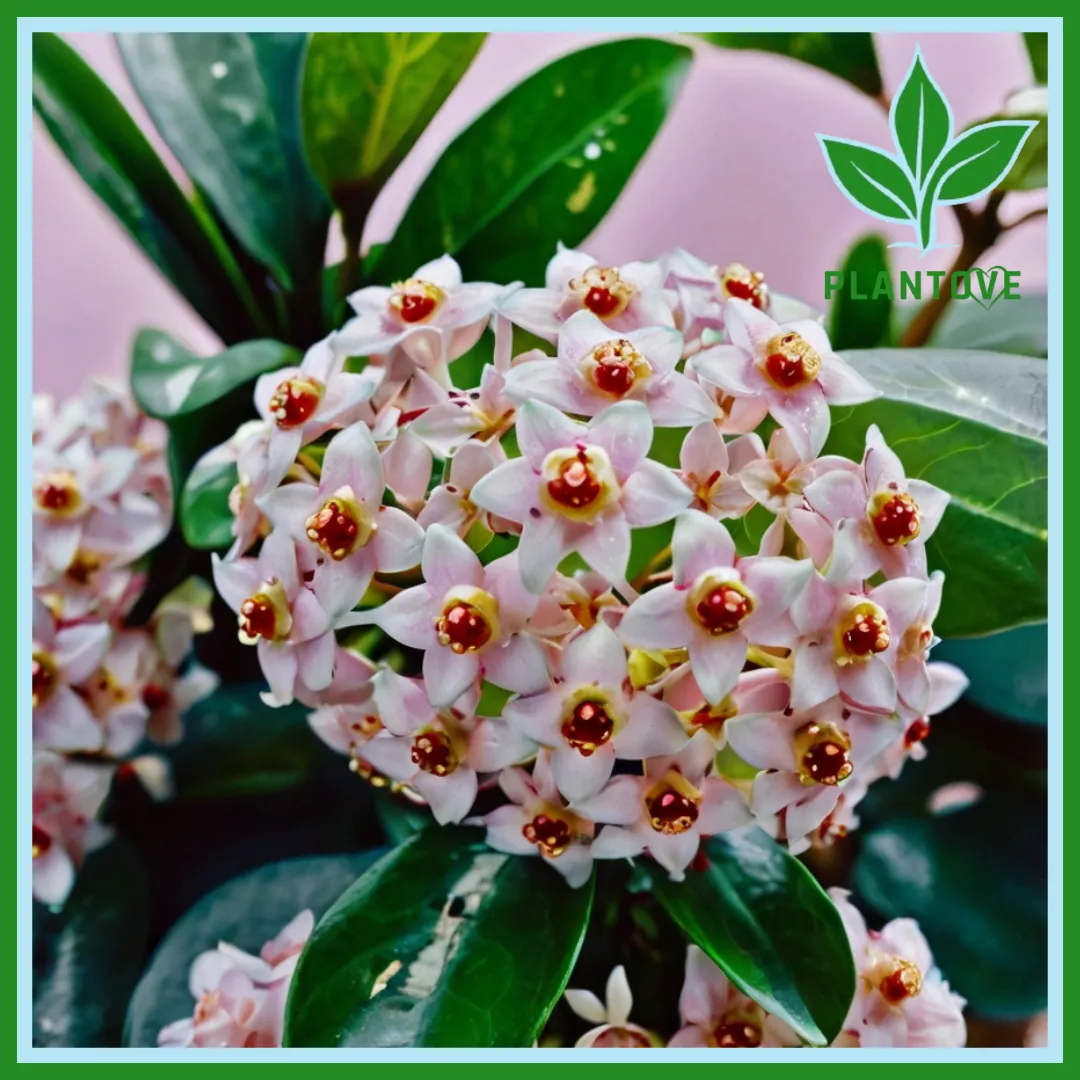Hoya plants, commonly known as wax plants or porcelain flowers, belong to the Hoya genus within the Apocynaceae family. These beautiful plants are known for their unique, waxy leaves and stunning clusters of star-shaped flowers. Not only do they offer visual appeal, but they are also relatively low-maintenance, making them an excellent choice for both beginners and experienced gardeners. In this article, we will explore the fascinating world of hoya plants, including various types, care tips, and much more.
Understanding Hoya Plants
To start, hoya plants are native to tropical and subtropical regions of Asia, Australia, and some parts of Africa. The genus Hoya consists of over 200 species, many of which are cultivated for their ornamental value. Consequently, their leaves are typically thick, waxy, and succulent, which helps them retain moisture in their native habitats. This adaptation makes hoyas well-suited for indoor environments, as they can tolerate periods of neglect regarding watering.
One of the most attractive features of hoya plants is undoubtedly their flowers. These blooms come in various colors, including white, pink, red, and yellow, often adorned with intricate patterns and fragrances. Additionally, the flowers usually appear in clusters and can last for several weeks, adding a touch of beauty to any indoor space.
Hoya Types
When it comes to hoya plants, the variety is astounding. Different species exhibit a range of leaf shapes, sizes, and flower colors, making it easy to find a hoya that suits your taste. Here are some popular types of hoya plants you might consider:
Hoya carnosa
Hoya carnosa, often referred to as the Hindu Rope Plant, is one of the most common types of hoya. This variety features thick, waxy leaves that grow in a unique, twisted form. In addition, the plant produces clusters of fragrant, star-shaped flowers that are typically white or pale pink, often with a darker center. Because of its hardiness, Hoya carnosa can thrive in various lighting conditions, making it an ideal choice for beginners.
Hoya kerrii
Hoya kerrii, commonly known as the Sweetheart Plant, is characterized by its heart-shaped leaves. This feature makes it a popular choice for gifts, especially on Valentine’s Day. The leaves are thick and glossy, while the plant can produce white or pink flowers. However, it may take a while to bloom, so patience is essential. Furthermore, Hoya kerrii is relatively low-maintenance and prefers bright, indirect light.
Hoya pubicalyx
Another popular species is Hoya pubicalyx, known for its striking flowers. The leaves are dark green with a slightly hairy texture, and the flowers can be deep pink or red with a yellow center. This plant is a fast grower, so you may find it produces multiple clusters of flowers, making it a favorite among collectors. Therefore, Hoya pubicalyx thrives in bright light and enjoys humidity.
Hoya lacunosa
If you’re looking for charm, Hoya lacunosa fits the bill. This species has small, thick leaves and fragrant, star-shaped flowers. Typically, the flowers are white or pale yellow, often with a red or pink center. Moreover, Hoya lacunosa is a trailing plant, making it an excellent choice for hanging baskets or shelves. It prefers bright, indirect light and higher humidity levels.
Hoya bella
Last but not least, Hoya bella is known for its delicate, narrow leaves and beautiful clusters of pink, star-shaped flowers. This species is often grown as a trailing plant and can produce numerous blooms throughout the year. Consequently, it prefers bright, indirect light and well-draining soil to thrive.
Hoya Care

Caring for hoya plants is relatively straightforward, which makes them an ideal choice for indoor gardening. Here are some essential care tips to ensure your hoya plants thrive:
Light Requirements
First and foremost, hoya plants prefer bright, indirect light. While they can tolerate lower light conditions, their growth may slow down, and they may produce fewer flowers. If you notice the leaves becoming leggy or stretching toward the light, it’s a sign that your plant needs more brightness. Thus, placing your hoya near a window with filtered sunlight is ideal.
Watering
Another critical aspect of hoya care is proper watering. Hoya plants prefer to dry out slightly between waterings. Overwatering can lead to root rot, while underwatering can cause the leaves to become wrinkled. Therefore, a good rule of thumb is to water the plant when the top inch of soil feels dry. During the growing season (spring and summer), you may need to water more frequently. In contrast, in fall and winter, reduce watering as the plant enters a dormant phase.
Soil and Potting
Using the right soil mix is essential for the health of your hoya plants. A well-draining potting mix is crucial because hoyas do not like to sit in soggy soil. You can create a suitable mix by combining regular potting soil with perlite, orchid bark, or sand to improve drainage. Additionally, ensure that your pot has drainage holes to prevent water accumulation.
When repotting, choose a slightly larger pot to allow for growth. However, avoid going too big, as this can lead to overwatering issues. Typically, repotting is necessary every couple of years to refresh the soil and provide ample space for the roots.
Temperature and Humidity
Hoya plants thrive in warm temperatures, ideally between 60°F and 80°F (15°C to 27°C). While they can tolerate slightly cooler temperatures, it’s essential to protect them from frost. Additionally, high humidity levels benefit hoya plants, especially during the growing season. If your home is dry, consider using a humidifier or placing a tray of water near the plant to increase humidity.
Fertilizing
Furthermore, fertilizing your hoya plants can promote healthy growth and encourage blooming. During the growing season, use a balanced liquid fertilizer diluted to half strength every 4-6 weeks. However, avoid fertilizing during the fall and winter months when the plant is dormant. It’s important to note that too much fertilizer can lead to salt buildup in the soil, which may harm the plant.
Pruning
Although pruning hoya plants is not strictly necessary, it can help maintain their shape and encourage bushier growth. If your hoya becomes leggy or overgrown, feel free to trim back the stems to promote new growth. Use clean, sharp scissors or pruning shears to avoid damaging the plant.
Pests and Diseases
Although hoya plants are relatively pest-resistant, they can still fall victim to common houseplant pests such as aphids, mealybugs, and spider mites. Therefore, regularly inspecting your plants and wiping the leaves with a damp cloth can help prevent infestations. If you notice pests, treat them promptly with insecticidal soap or neem oil.
Root rot is another concern, primarily caused by overwatering or poorly draining soil. To avoid this issue, ensure proper watering practices and use a well-draining potting mix.
Propagation
Propagation is a fun and rewarding way to expand your collection of hoya plants. The most common method is stem cuttings. Here’s how to propagate hoya plants successfully:
- Choose a Healthy Stem: First, select a healthy stem with at least two or three leaves.
- Make the Cut: Use clean, sharp scissors to cut a 4-6 inch stem section just below a leaf node.
- Let It Callous: Allow the cutting to dry for a few hours or overnight, forming a callous over the cut end.
- Plant the Cutting: Place the cutting in a small pot with a well-draining potting mix, burying the cut end about an inch deep.
- Water: Water the cutting lightly, keeping the soil moist but not soggy.
- Provide Conditions: Finally, place the pot in a warm, bright location with indirect light. You can cover the pot with a plastic bag to maintain humidity until roots develop.
After a few weeks, the cutting should root, and you can care for it like a mature plant.
Conclusion
In conclusion, hoya plants are a stunning addition to any indoor garden. Their unique foliage, beautiful flowers, and relatively easy care make them a favorite among houseplant enthusiasts. With a variety of types to choose from, you can find a hoya that suits your taste and space. By understanding the specific care requirements of hoya plants and providing them with the right conditions, you can enjoy the beauty and charm of these remarkable plants for years to come. Whether you’re a beginner or an experienced gardener, hoya plants offer a delightful opportunity to enhance your living space with nature’s elegance.

